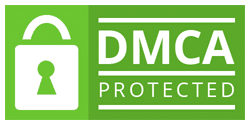5787
This assessment task allows you to increase your team work skills, gain confidence presenting and study a topic relevant to your discipline. It will also provide you with foundation skills and knowledge necessary to succeed in later units (such asHSH211 Australian Health Care System).
This task assesses your achievement of the Unit Learning Outcomes (ULOs) 1-5 and Graduate Learning Outcomes (GLOs) 1-3 and 7.
What do I need to do?
1: Form groups
You need to work ingroups of 4to complete this assessment task.
On-campus students: You will form your group in your week 3 seminar.
Cloud (online) students: You will be allocated groups on Wednesday 4th April (after Census date to avoid movement). Each group will have their own team discussion area that only they (and staff) can see and access.UPDATE: These groups have now been allocated. You should be able to see your group discussion area at the bottom of the discussion boards. You can make contact with your group members via that board, and you can also refer to the spreadsheet with group allocationshere.
This PPT has some helpful tips about working in a group.
2: Complete your group charter
Once you have formed your group, you need to complete yourTeam charterThis Word document is a ‘contract’ that you use to help you function as a team!
On-campus students:You will email your team charter to your tutor with your completed presentation 24 hours before your presentation. Presentations will occur in week 8 & 9 seminars; your date of presentation will be negotiated within your seminar when you form groups in Week 3.
Cloud (online)students: You will complete your team charter and upload it into the Assignment 2 (AT2) dropbox prior to your due dateMonday 7th May 7pm-this date was extended to give you an extra week to work within your teams, therefore ignore the unit guide date.
3: Choose your population group or sub-group
There is no rule with regards to which population group you choose; you can be as broad or narrow as you like. For example, the population can be based on a mixture of attributes, such as gender, age, location (e.g. urban vs. rural), Indigenous status, language spoken at home, cultural background, socio-economic status, sexual or gender identification (e.g. gay, lesbian, bisexual, or transgender). A guiding principle for how broad or narrow the population can be is whether credible evidence can be found to present and substantiate the health profile. Too narrow, and it may be too difficult to find evidence; too broad, and it may be too difficult to discuss the population adequately and meet the assessment criteria. You may wish to discuss your chosen population group with your tutor!
Attachments:
 Assessment-Ta….docx
Assessment-Ta….docx





